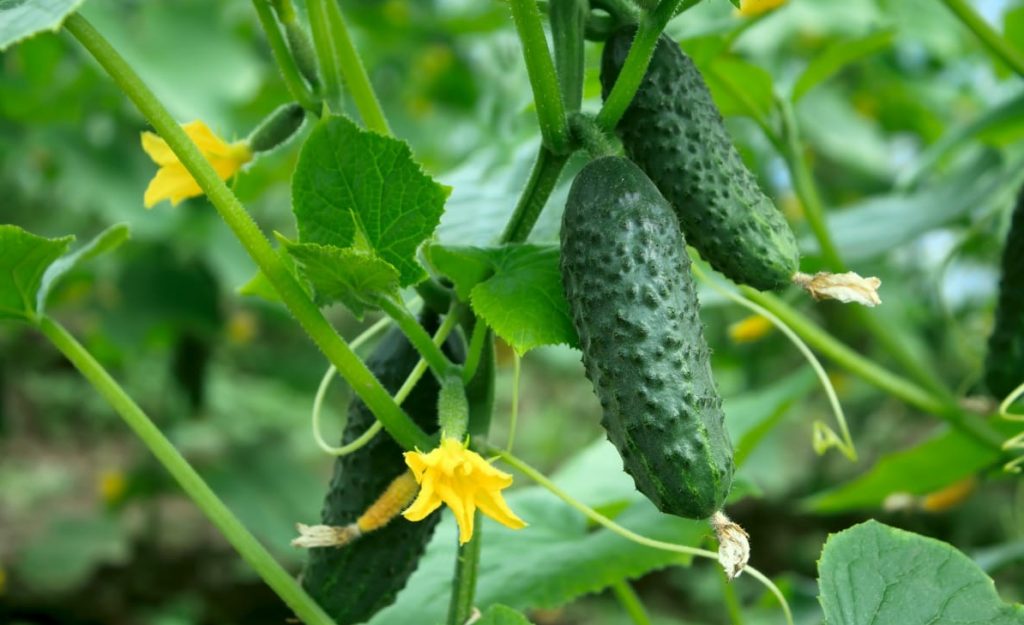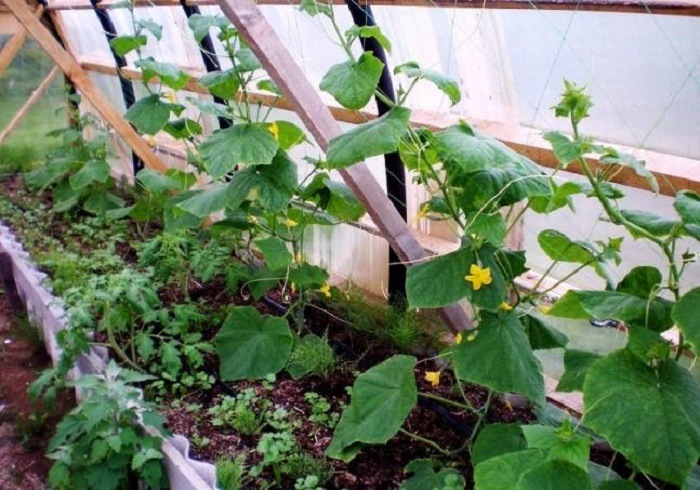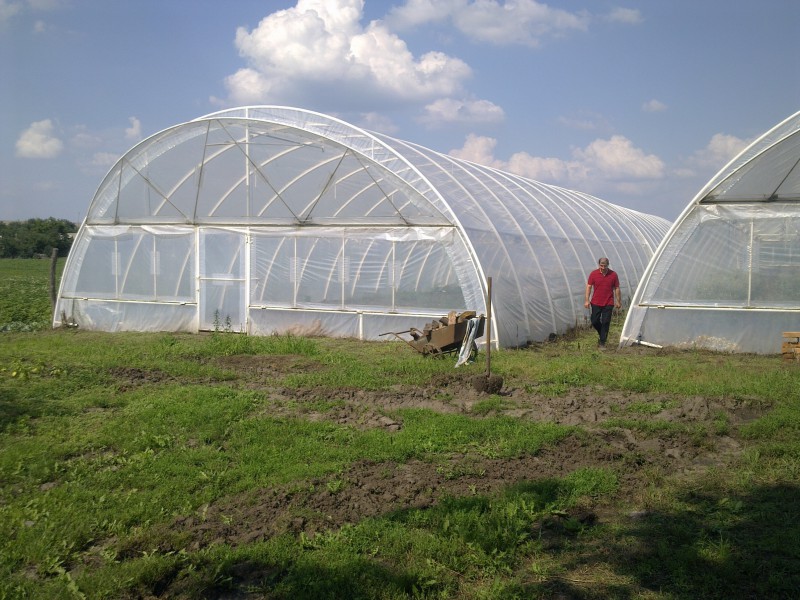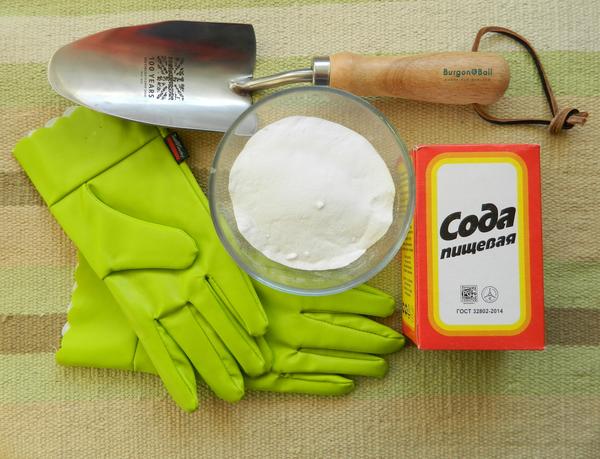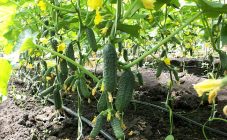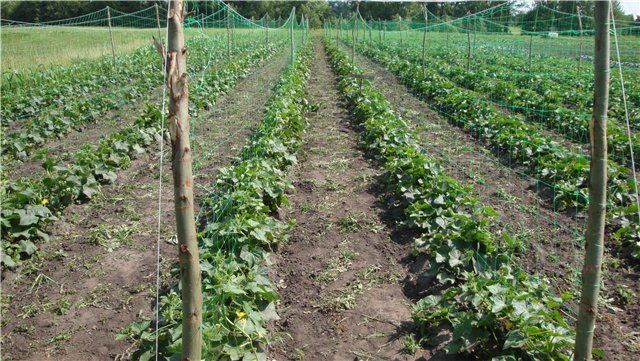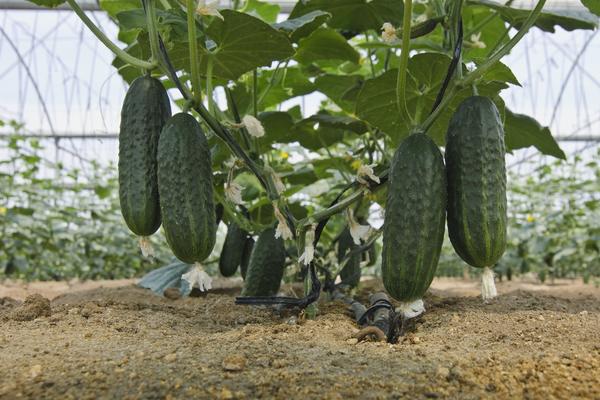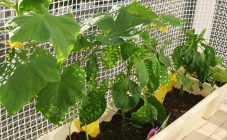Content:
By its nature, a cucumber is a herbaceous annual liana, which, depending on the variety, forms one whip or several, as well as lateral branches from the leaf axils. Removing such lateral processes is called pinching.
Why do you need pinching in greenhouses and open ground
Many varieties and hybrids of cucumbers acquire numerous lateral shoots almost immediately after the emergence of shoots. For the gardener, these branches do not carry any practical benefit. Moreover, the plant spends its energy on their growth, which negatively affects the yield.
The main stem, which will give the crop, is forced to compete for light, water and nutrients with the stepsons. If the lateral shoots are not removed in time, the main lash will begin to stretch, the number of leaves on it will decrease, and the fruits will not reach their maximum performance. That is why the procedure is necessary both in open beds and in greenhouses.
By pinching a cucumber lash, you can solve a number of problems:
- In open beds in very rainy summers, the risk of fruit rotting to their technical ripeness is significantly reduced.
- A well-groomed bed not only looks attractive, it is much easier to care for it.
- Removing the stepchildren improves the illumination of the main lash, so all the cucumbers are perfectly visible and you will not be able to miss them.
- Not only the strength of the main vine increases after pinching, but also the growing season (until autumn).
- Fruits ripening time is reduced.
Theoretically, plants in the beds can do without pinching, especially if the technology of forming rows and row spacings is observed, and a sufficient amount of fertilizer is applied. But with greenhouse cucumbers, everything is different. The difference in the volume of the harvested crop on the pinched bushes and those left without pinching is too great.
For all the usefulness of the procedure, it should be carried out correctly. Only some of the branches are pinched. And this is done in the first half of the summer. Only for late plantings, the dates are shifted to the end of July and August.
How to pinch cucumbers in a greenhouse step by step
For a greenhouse or greenhouse, the correct pinching of cucumbers is of paramount importance. Strongly overgrown cucumbers will begin to press each other, shade. This always affects the quality of the fruit badly. Moreover, in cramped conditions there is a favorable environment for the development of fungal and other diseases leading to the death of plants.
Stepsons on cucumbers - how to remove:
- Lateral shoots formed on the main whip up to 4 leaves are subject to plucking.
- All stepchildren formed after the 7th leaf are plucked, except for one. If 3-4 lateral processes stretch from the leaf axil, 2-3 are removed, and 1 is left.
- After 10 leaves, the lateral processes are plucked so that 2-3 leaves and ovaries next to them remain on them.
- After 11-12 leaves, 3 leaves and 3 ovaries are left on the side shoots.
- The main lash that has reached the maximum length is pinched at the end. From this point on, all newly forming lateral shoots are removed.
At each stage of the formation of the bush, it is neatly tied to the trellis. The process is quite laborious, especially with large planting volumes.That is why varieties that do not require pinning for greenhouses are so popular.
The pinching scheme for hybrids and self-pollinated varieties with a bouquet or bundle type of ovary formation looks somewhat different. Pinching them is done as follows:
- Up to 4 knots do not leave any lateral shoots or ovaries.
- Nodes 4 to 17 remove shoots, but leave ovaries.
- From 18 to 20 leaves on the main stem, pinch lateral shoots after 2 leaves.
In addition to general ones, experts also give some special recommendations for pinching, with which you can increase yields:
- To minimize stress on the plant after the first and subsequent removal of side shoots, it is recommended to apply complex organic or mineral fertilizers during watering. Immediately after completing the procedure, water all injured bushes abundantly.
- No special tools are required for cutting cucumber branches. The young plant is very fragile, so the extra branches break off easily. If they tightened with pinching and the lashes had time to coarse, their cutting is performed with sharp scissors or pruners.
- Together with pinching, it is recommended to immediately remove all dry leaves. They do not perform any useful function, but they shade the plant. In this case, after cutting off diseased leaves and branches, it is important to thoroughly disinfect the instrument with alcohol or fungicidal solution.
- Since the lash is tied artificially, the mustache is no longer required for the bush. For this reason, they must be trimmed. This leads to savings in plant resources, as well as better illumination of beneficial leaves and fruits.
- Plucking must be done very carefully so as not to damage the sinuses themselves. If you neglect this, cucumbers will spend a considerable part of their strength on the restoration of injured tissues.
The ideal material for tying is thin cotton strips 2-3 cm wide (an old 100% cotton T-shirt is perfect for this purpose). The twine and ropes are not suitable, as they cut too hard into the stems, injuring them. If you tighten the lash too much at the place of tying, it will first begin to fade, and then completely dry out.
It may seem that the pinching procedure allows you to increase the planting density. This is not true. For vertical laying of lashes (in greenhouses), the minimum distance between the bushes is 30 cm, and in the beds - at least 50 cm.
Pickling cucumbers in the open field
The pinching procedure in the beds largely depends on how exactly the gardener decided to form the cucumber bushes. So, if trellises are used, the plant is trimmed in the form of a pyramid, in almost the same way as in a greenhouse:
- From ground level and up to 4 leaves, all cucumber stepchildren are removed. This is done very carefully so as not to harm the main stem.
- Between 5 and 8 leaves, 1 ovary and 1 leaf are left at the lateral processes.
- Above 8 leaves, the stepsons leave 2 ovaries and 2 leaves each, and the rest must be cut off.
- Above 10 leaves, the lateral processes break off, leaving 3 leaves and 3 ovaries on them.
- 4 leaves and 2-3 ovaries are left at the top, and the rest is pinched.
The pruning process allows for the formation of plants in which all fruits are visible and the foliage receives enough light and nourishment. The appearance of such well-groomed trellises is much more attractive than that of uncut ones. If the lashes spread freely along the bed, the stepsons are removed up to 4 leaves, and the main stem, which has reached the desired length, is cut off at the top. Immediately after this, the bush gives many lateral processes on which female flowers are formed.
The final stage of pinching falls on the second decade of July, if the seedlings were planted in the soil according to the standard scheme in the first decade of May. Then the last 1-2 lateral processes are left on the main stem. At the same time, all damaged, dried and diseased leaves are carefully removed.As a top dressing, peat, a little wood ash are poured under each bush, and when watering, a herbal infusion is added.
It is most convenient to perform pickling when the length of the lateral processes reaches 5-6 cm. The central stem will not suffer from this, so the procedure will be as painless as possible. If the shoot is too short (3-4 cm), the main stem can be accidentally damaged. Delayed pruning when the length of the stepsons is more than 20 cm will no longer bring a tangible effect.
If you do not follow the pinching scheme and leave the lower side shoots with flowers, there will be no benefit from this. Weak fruits of irregular hook-like shape are formed on these shoots. In this case, the fruits on other shoots will not receive the necessary nutrients. It happens that gardeners are sorry to remove shoots, but by doing so they only make things worse.
Do all cucumbers need to be pinned
Modern breeding seeks to facilitate the work of gardeners in every possible way, therefore, new items on the market often contain a note in the description of the variety: “does not require pinching”. This usually applies to varieties that do not form whips, but lush bushes. For example, Petrovsky F1 or Sarovsky F1.
Varieties that form short lateral shoots do not require pinching. These are such hybrids as Gribovchanka or Valdai. For all other varieties, the formation of a bush is a very desirable procedure, because without it it will be possible to get only a well-leafed bush with a small number of small cucumbers.
Further care tips
In order for the pinching procedure to give the maximum effect, you should adhere to the care recommendations. They are common to all varieties:
- When to water? Since the root system of cucumbers is very sensitive, watering with cold water quickly has negative consequences. The fruits begin to taste bitter, the leaves wither, and growth slows down. Watering with very warm water is also bad. What to do? On the site or in the greenhouse, you need to keep a container of water for irrigation. The temperature in it will be equal to the ambient temperature. The ideal time for watering is morning. During these hours the earth cools down a little, and the water is no longer hot.
- What to water with? Water from a lake or river is ideal, but, unfortunately, not everyone can afford it. There is little salt in the river, and its temperature is optimal. It is best to use water heated to 18-20 ° C for irrigation. If there is no river nearby, collect water in open barrels in the evening. By morning, it will settle and warm up to the optimal temperature.
- How to extend the fruiting period? At a certain stage - in the second half of summer - new ovaries stop appearing on the plants. This usually indicates the exhaustion of the potential of the bush. A new flowering can be achieved with special resuscitation measures.
First of all, you need a special feeding. Fish waste will be useful, which is poured with water in a 1: 2 ratio. Remove the container in a dark, warm place. Can be removed to the far corner of the site. After 3 days, foam should appear on the surface. This indicates the readiness of the solution. The liquid is drained, a glass of wood ash and the resulting mixture are added to the roots of each bush for each liter. Then, on each vine, all leaves are plucked, except for the top ones. The bare stem is folded neatly in a spiral and secured with a hairpin to the ground. Soon, new shoots should start growing from the upper points of growth. Leave one - the strongest. - Can other plants be planted in the greenhouse? Yes, practice has shown that a tomato is an excellent neighbor for a cucumber.
If for some reason cucumbers cease to be tasty and acquire unpleasant bitterness, the following measures will help to cope with this problem:
- Improvement of illumination, perhaps, the shadow interferes with the bush or the polycarbonate is not transparent enough.
- Removing excess plants when planting is too thick.
- Daily watering in the morning.
- Mulching the beds, as well as timely weeding.
Getting an excellent harvest of delicious cucumbers is a feasible task for a gardener with any experience. However, really tasty cucumbers are made with some effort. It is impossible to get lush vines and strong, well-formed cucumbers from just quality seeds. Top dressing, pinching, daily watering, weeding, tying - this is a list of activities that will take a gardener time from planting seedlings to collecting the last cucumber.

